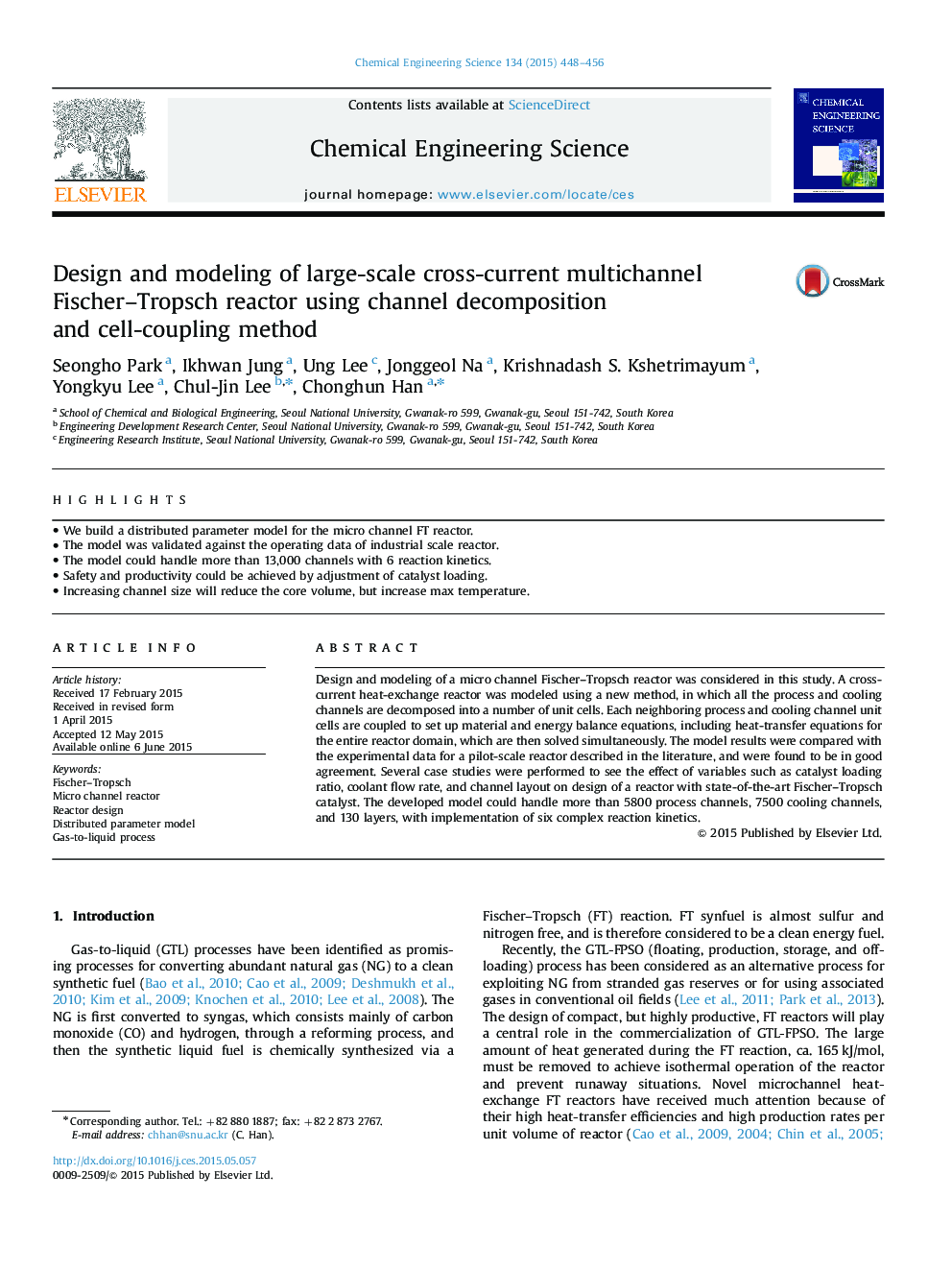| Article ID | Journal | Published Year | Pages | File Type |
|---|---|---|---|---|
| 6589751 | Chemical Engineering Science | 2015 | 9 Pages |
Abstract
Design and modeling of a micro channel Fischer-Tropsch reactor was considered in this study. A cross-current heat-exchange reactor was modeled using a new method, in which all the process and cooling channels are decomposed into a number of unit cells. Each neighboring process and cooling channel unit cells are coupled to set up material and energy balance equations, including heat-transfer equations for the entire reactor domain, which are then solved simultaneously. The model results were compared with the experimental data for a pilot-scale reactor described in the literature, and were found to be in good agreement. Several case studies were performed to see the effect of variables such as catalyst loading ratio, coolant flow rate, and channel layout on design of a reactor with state-of-the-art Fischer-Tropsch catalyst. The developed model could handle more than 5800 process channels, 7500 cooling channels, and 130 layers, with implementation of six complex reaction kinetics.
Related Topics
Physical Sciences and Engineering
Chemical Engineering
Chemical Engineering (General)
Authors
Seongho Park, Ikhwan Jung, Ung Lee, Jonggeol Na, Krishnadash S. Kshetrimayum, Yongkyu Lee, Chul-Jin Lee, Chonghun Han,
